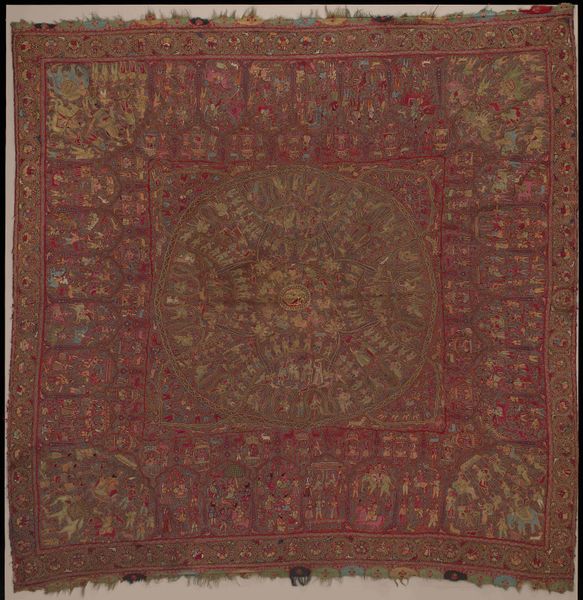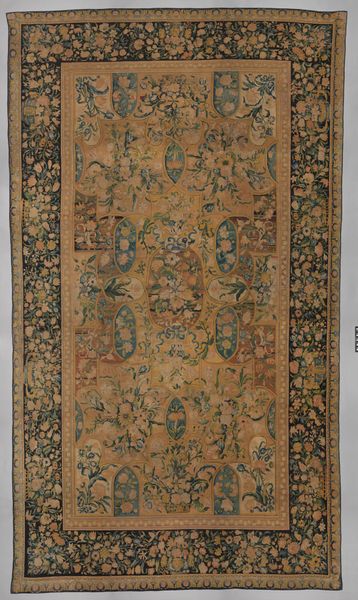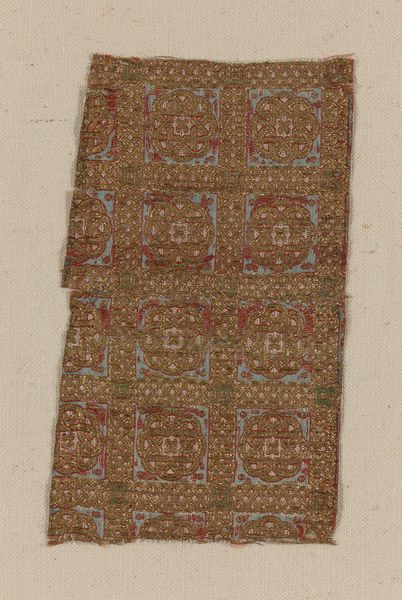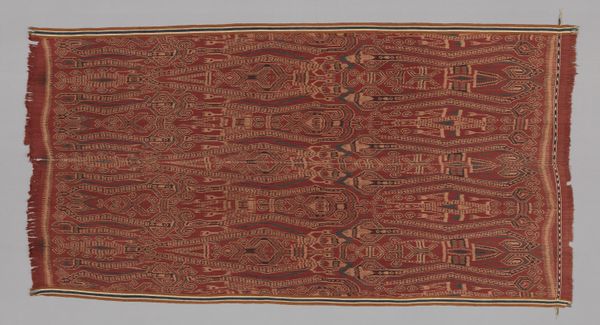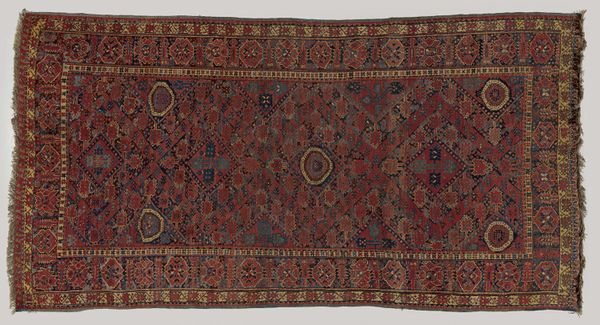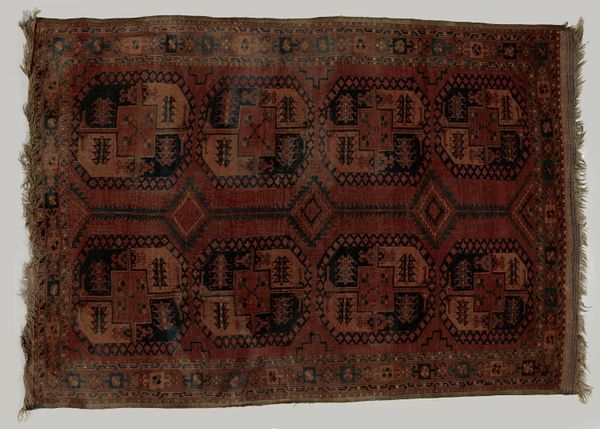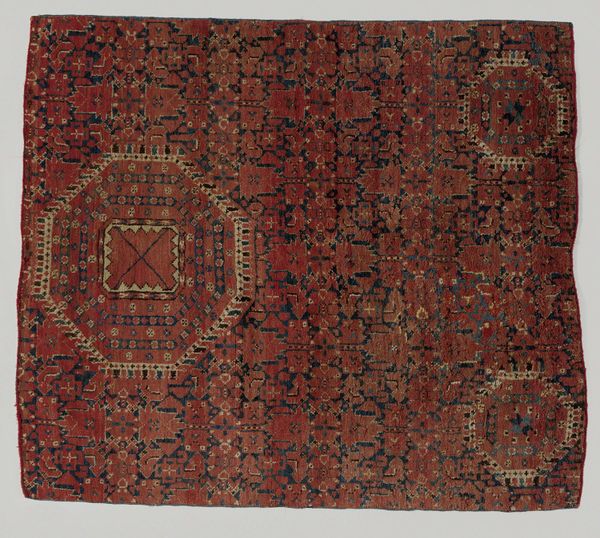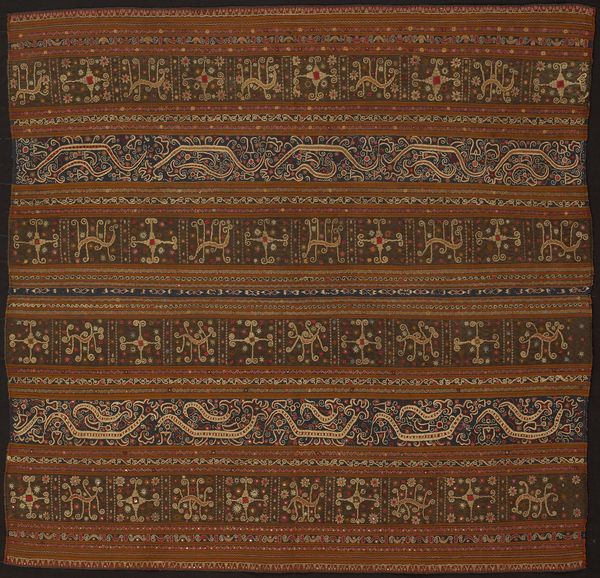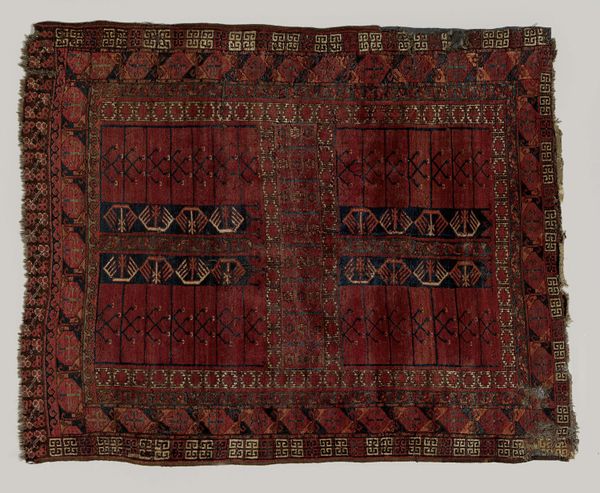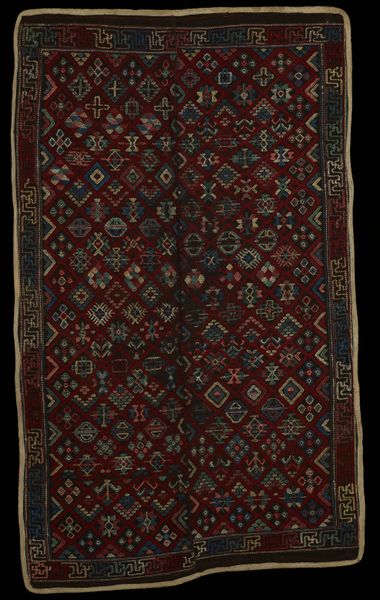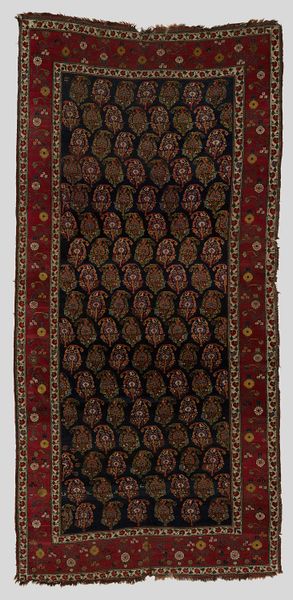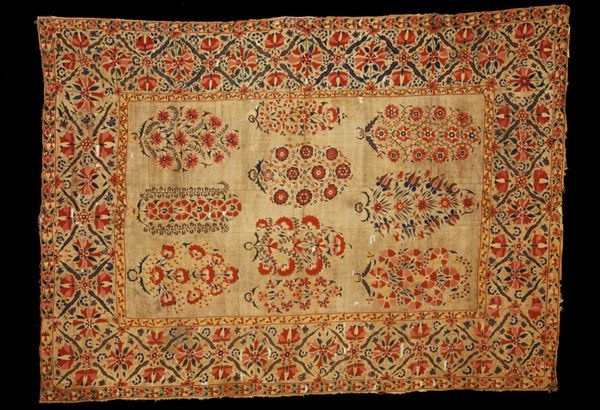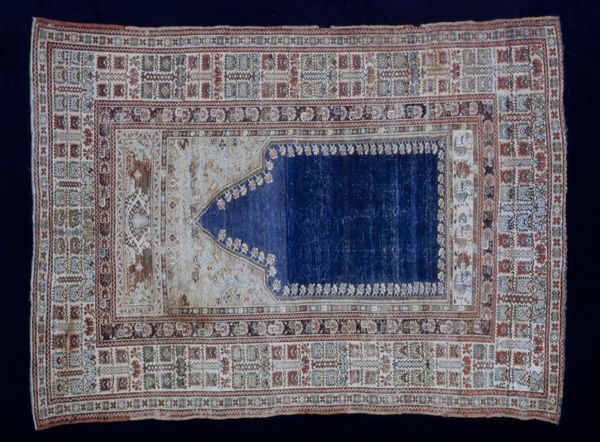
fibre-art, weaving, textile
#
fibre-art
#
weaving
#
bird
#
textile
#
geometric
#
orientalism
#
islamic-art
Dimensions: 538.5 × 198.8 cm (212 × 78 1/4 in.)
Copyright: Public Domain
Editor: We're looking at a textile piece, titled "Carpet," dated before 1473 and currently residing at the Art Institute of Chicago. It is by an anonymous artist, incorporating fiber art and weaving techniques. There’s a powerful feeling of geometric order combined with intricate border designs... what's your interpretation of it? Curator: This carpet embodies more than just decorative art; it’s a powerful signifier of cultural exchange and social standing. Carpets like this served as potent symbols of wealth and influence. Have you considered its potential as a political object? Editor: A political object? Tell me more about it. Curator: Think about who commissioned it and why. Carpets often marked significant occasions or affirmed diplomatic relationships. Its creation and display broadcasted wealth and sophistication but also served as tools for asserting social power through artistic patronage. Editor: That is quite fascinating. I never really considered carpets as politically charged objects. Curator: Its value stems not just from its materials and craftsmanship but also from its ability to communicate messages about taste, power, and cultural identity. Think about the visual vocabulary too – what does the geometry suggest in the context of Islamic art and its patronage? Editor: This sheds new light on my understanding. Looking beyond pure aesthetics allows the observer to delve deeper. I am rethinking how I understand this “Carpet.” Curator: Indeed. Appreciating its impact and considering who has the power to present, conserve, and interpret these art forms adds more meaning.
Comments
No comments
Be the first to comment and join the conversation on the ultimate creative platform.
